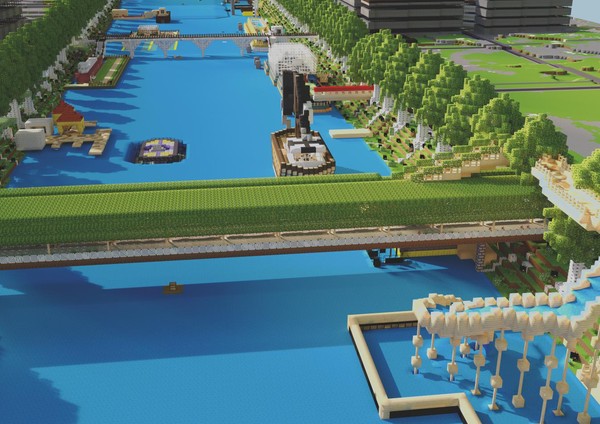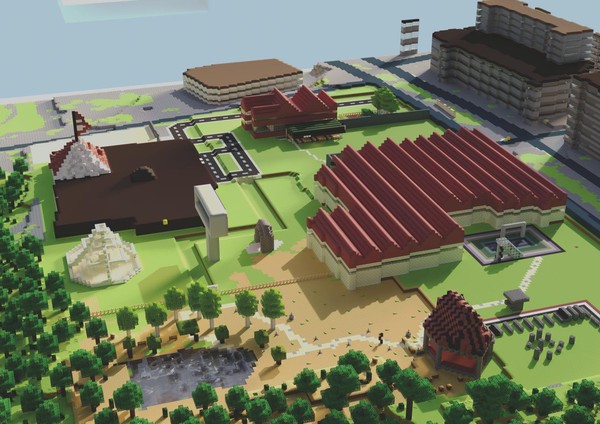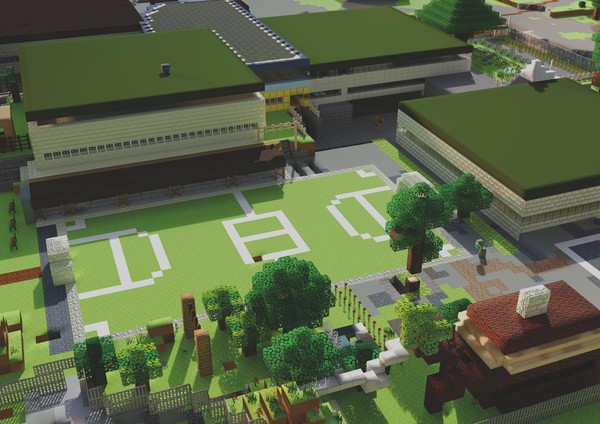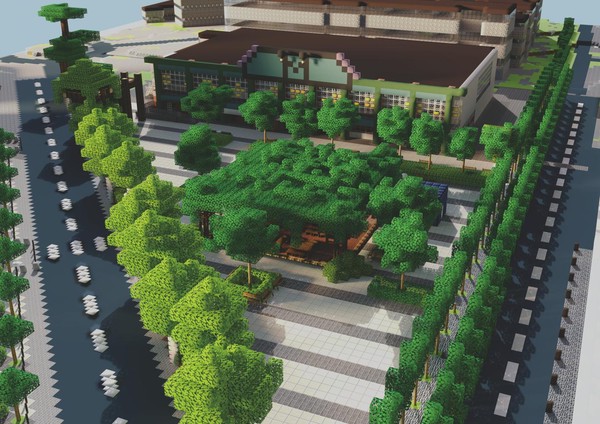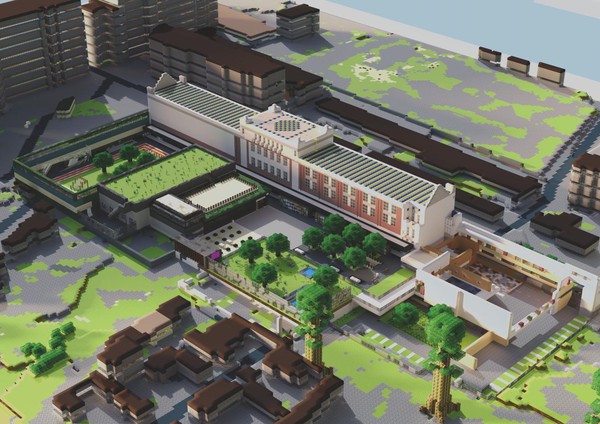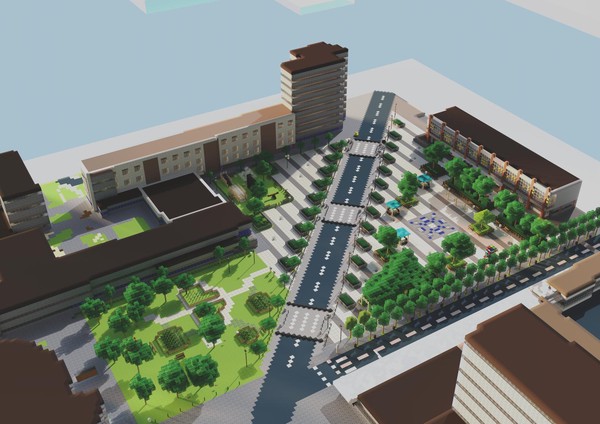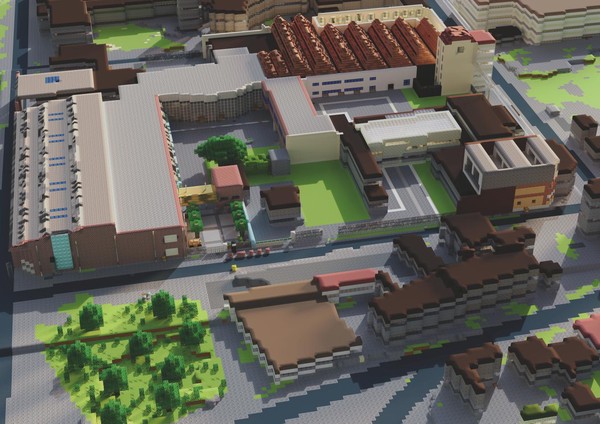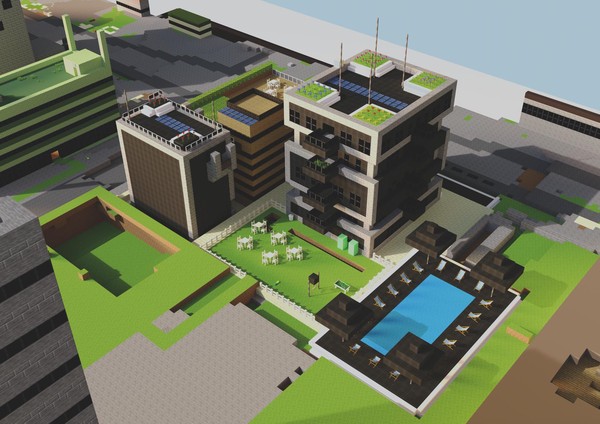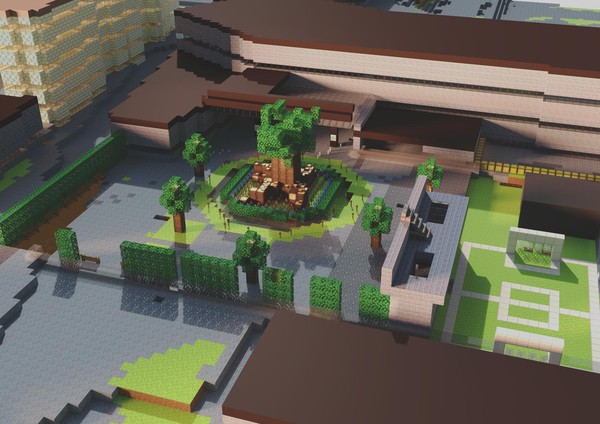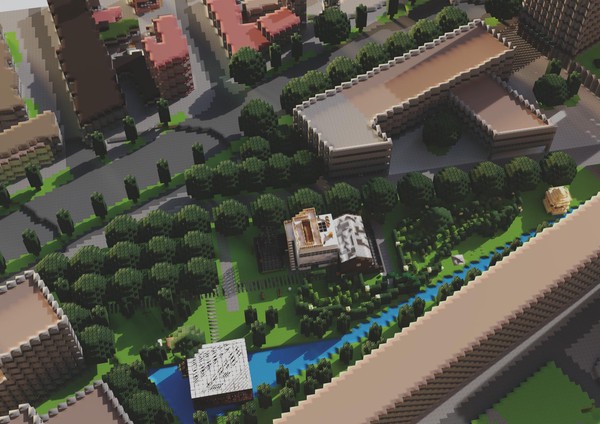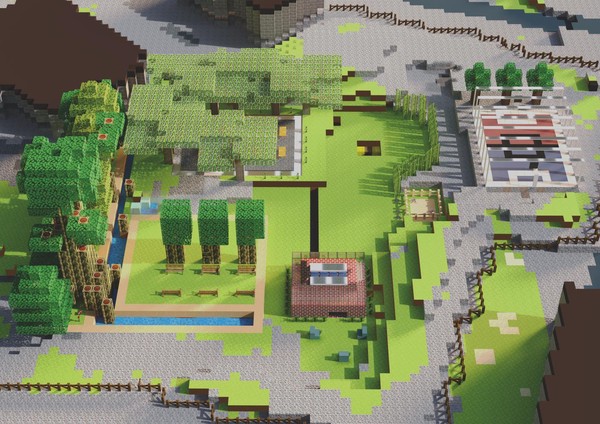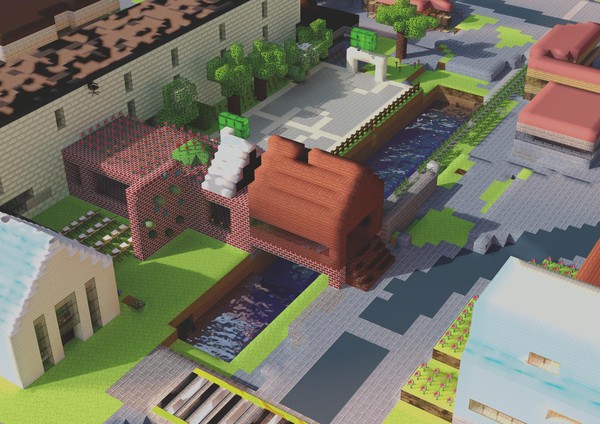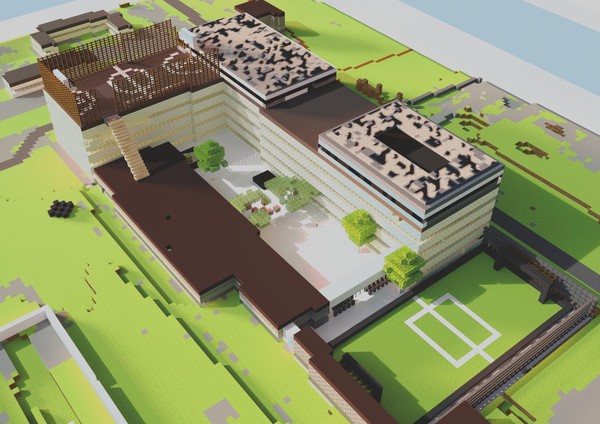The Digital Urbanities in Games (UNEJ) project is an experiment conducted from September 2020 to December 2024 as part of the Contributory Learning Territory program. It is the result of a partnership between the Institute for Research and Innovation (IRI) and the Academic Delegation for Digital Education (DANE) of the Créteil Academy for its leadership, as well as the Seine-Saint-Denis Departmental Council for its management and implementation.

Led by volunteer teachers for four years, the project focused on organizing workshops during school hours. These workshops relied on the video game Luanti (the open-source equivalent of Minecraft, formerly Minetest) to support students from eight middle schools and two high schools in the design and modeling of urban development proposals based on their local area. All of this work was part of the Paris 2024 Olympic and Paralympic Games. This initiative mobilized multi-stakeholder collaboration and a co-construction approach inspired by the principles of “contributory research” developed at the IRI. Professional partners supported the teachers in developing the knowledge and skills necessary to organize the workshops. These partners included the IGN, the CDOS 93, the 3 Hit Combo association (represented by Thomas François, now independent), the O’Zone architecture firm, and the ICI! architecture association. These stakeholders played a major role in the success and dissemination of the program.
History
The initial proposal for the Digital Urbanities in Play initiative was formed between 2018 and 2019, based on research developed by Bernard Stiegler and the team at the Institute for Research and Innovation, notably during the 2018 Entretiens du Nouveau Monde Industriel (ENMI), entitled The Intelligence of Cities and the New Urban Revolution. Introduced by Patrick Braouezec (then president of the EPT Plaine Commune) and Bernard Stiegler, this event explored the industrial future of cities in the era of platforms and new building technologies, such as BIM (Building Information Modeling).
Numerous urban experiments were presented, including Rennescraft, which used Minecraft and data from the City of Rennes GIS. These interviews led to the publication of a collective work, Le nouveau génie urbain, which provided a clear theoretical framework for exchanges between partners and the organization of workshops. This basis made it possible to develop a pedagogical approach adapted to teaching, involving teachers from Seine-Saint-Denis from the early stages.
Methodology
The program relied on a variety of pedagogical inputs to address planning issues. The students gradually broadened their scope: after working on their playground, they focused on their neighborhood, and finally focused on the Olympic and Paralympic Village.
The most popular subjects were Mathematics, Technology, and History-Geography, often supplemented by Life Sciences, Physics-Chemistry, and French depending on the topics covered, such as ecology, water management, or developing an argument to present ideas.

The use of Luanti encouraged collaboration between students, mutual support, and the development of diverse knowledge. The methodology, developed by O’zone, is HERE! and the IRI was structured around three distinct phases:
The students learned the digital tool, digitally explored the territory, and physically visited the area to identify its development challenges.
After reconstructing the territory on Luanti using development plans provided by the urban planners, the students collectively reflected on the issues to be addressed, including along ecological, social, and aesthetic domains. This reflection nourished their proposal modeling, which they later presented to a panel of judges.
Finally, they prepared their proposals, presentations, and displayed their work to a panel of judges.
This structured methodology, combining exploration, collective reflection, and modeling, was adapted in various formats to adjust to the needs and constraints of the participating schools.
Technical Device
Luanti was the key element of the program thanks to its adaptability and its features, coinciding in a digital experience comparable with Lego. This open-source and free tool, equivalent to Minecraft — until recently considered the most downloaded video game in the world — is easily accessible to young students, who are often already familiar with this type of game. This choice was made following a collaborative and collaborative technology monitoring process initiated with Thomas François, one of the founders of the Rennescraft project. While Minecraft mobilizes knowledge acquired outside of a school setting, its status as paid and proprietary software, as well as the limitations of its educational version, hinders its use in the classroom. Conversely, Luanti, open-source and modular, met pedagogical expectations much better thanks to its free nature, flexibility, and low computer resource consumption.
As part of the UNEJ project, geographic data was transformed into 3D voxel maps using the IGN’s “Minecraft à la carte” service, allowing the Seine-Saint-Denis region to be represented. In partnership with the IGN, a map covering the entire department was generated and then hosted on a server maintained by the IRI. Each participating school had private access to a dedicated area of this map. In addition, a two-dimensional version of the map was made available to facilitate the location of areas and the preparation of activities. In addition, the IRI has provided customized mods to help teachers navigate the map, manage game sessions, and meet the specific educational needs of their students.
To learn more about the system, you can view this detailed tutorial
Teacher Training
Since 2020/2021, three annual training days have been organized at the initiative of the Créteil education authority to support teachers in the UNEJ project. These training sessions aimed to strengthen their theoretical and practical skills, develop teaching sequences, and collaborate with leading architects.
First Year: Theoretical Foundations and Introduction to Minetest
The first year laid the foundations, with presentations on digital challenges facing cities (Dominique Boullier, Vincent Puig) and sports development policies (CDOS93). Teachers explored the voxel map of Seine-Saint-Denis and acquired the necessary foundations to integrate Minetest into their educational projects.
Second Year: Practicals and Concrete Projects
The training focused on practical workshops, such as playground design and experience sharing. Specialists such as Valérie Peugeot provided innovative insights, while teachers deepened their knowledge of the digital tools used in the project.
Following Years: Development and Assessment
The following years deepened the practical aspects with a focus on programming (Python with Minetest), professional tools (BIM model of the VOP), and learning assessment. The final year provided an opportunity for an overall assessment of the projects and highlighted the sustainability of open educational resources and teacher contributions beyond the project.
School Workshops
Three organizational methods were implemented to adapt to the schools’ constraints. Some workshops took the form of bi-weekly, two-hour sessions with the same classes throughout the project. Others operated as after-school clubs, open by registration and often repeated from one year to the next. Finally, intensive workshops were organized over two or three days during dedicated weeks at the end of the term.
The architects and teachers worked closely together to optimize the workshops. They concluded that it was more appropriate to aim for rolling annual objectives, rather than a multi-year schedule.
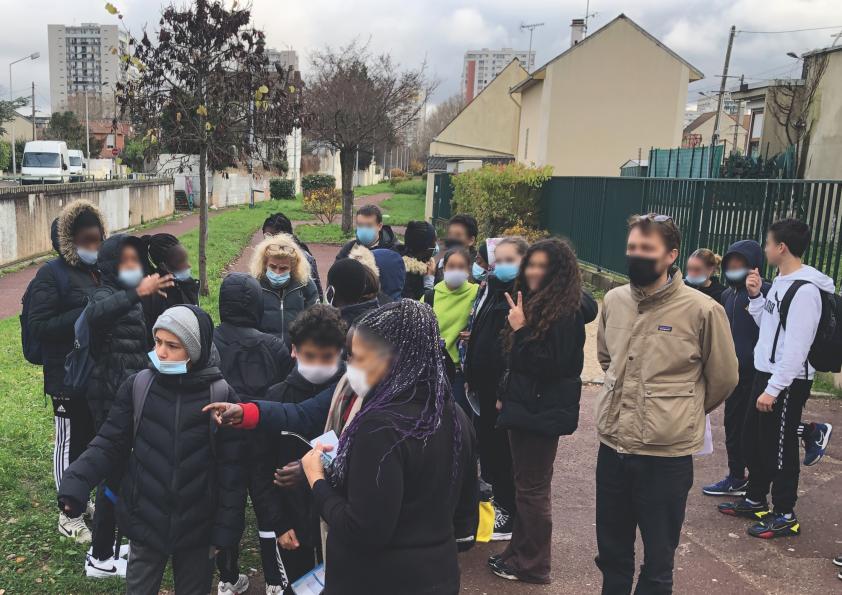
Thematic Projects
The Playground
Each school worked on its playground using the methods proposed by the lead architects. The students conducted visits, surveys, and observations before formulating development proposals inspired by the “Oasis” playground projects, aimed at making these spaces more welcoming and suitable.
The Nearby Neighborhood
In collaboration with local authorities, the students explored their immediate environment. They participated in urban consultations, met with elected officials, visited public spaces, and incorporated these experiences into their modeling.
The Olympic and Paralympic Village
Some schools focused their work on spaces linked to the legacy of the Olympic Games. Dora Maar Middle School, located near the Olympic Village, focused on the development of the Finot Mall. In addition, a Python programming workshop allowed students to develop tools to enhance their modeling.

Collective Modeling
During the second year, a collaborative workshop brought together several institutions around the theme of water. Guided by architects, the students designed developments for the banks of the Seine, integrating ecological and urban planning issues.
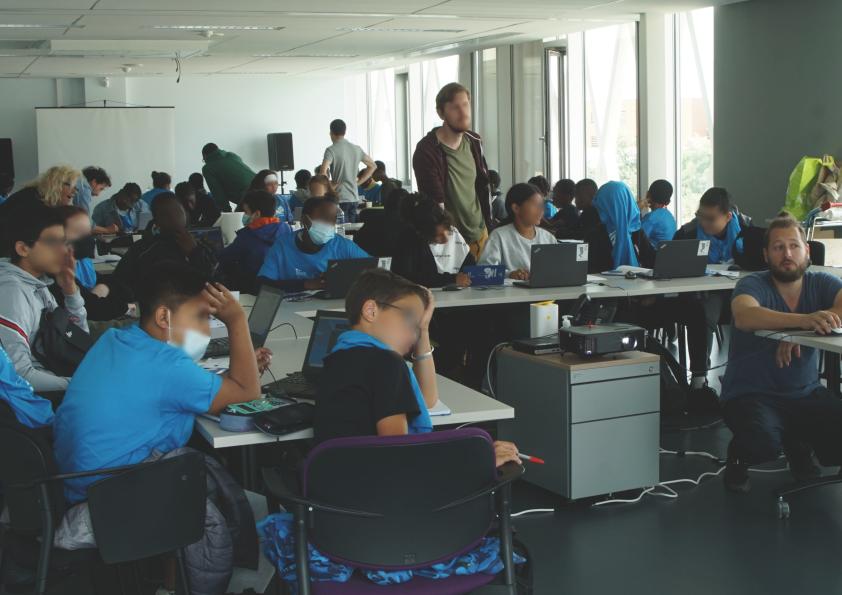
Final Presentation
A presentation was held at the Wangari Greenhouse to conclude these four years of work. The students finalized their projects before presenting them to the National Archives, highlighting their ideas and achievements.

Project Gallery
Here is a selection of projects completed by students on Luanti over the past four years.

